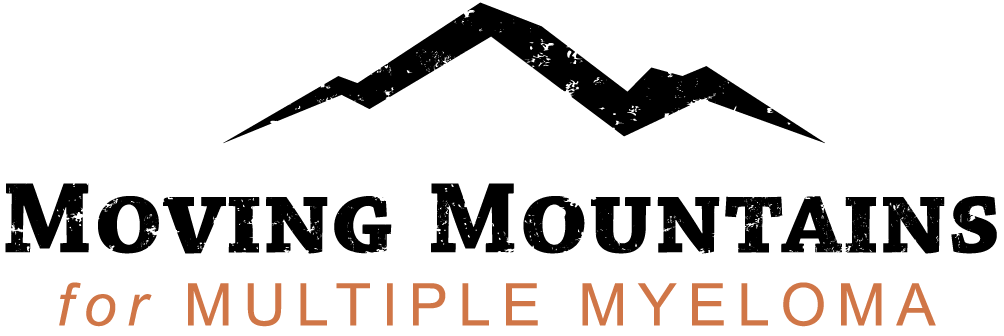
Mount Kilimanjaro, Tanzania2016
BLOGS

Ramona Biliunas
It Really Is About the Journey, Not the Destination
February 02, 2016
Wednesday, February 03
Two weeks ago, after six months of planning, preparation and envisioning perhaps the boldest of endeavors, Jeff and I set forth with our amazing and diverse team to climb Mt. Kilimanjaro … Africa’s tallest peak and the fourth tallest mountain in the world. Were we nervous? Yep, we sure were. But in all honesty, until we were feet on the trail, it really didn’t feel ... real. In fact, it was more surreal than real. Even as we hiked each day with the support of 82 porters, cooks, guides and the penultimate village of villages that were there to make sure we reached the summit ... it hardly seemed like it was really happening. But it was. Each step, each foot in elevation gained and lost, each hour, each temperate zone (there were five), each view and vista, each camp.
Epic is what it was.
… an epic journey of a shared cause with myeloma survivors, loved ones, friends, rainmakers and stewards of this battle we are each waging in our own way.
… an epic journey of physical and mental challenges that were met with sheer will, determination and an indescribable conviction to “just do it.”
… an epic journey led by a compassionate, caring and committed group of guides whom I can only describe as angels with names like Freddie, Augustine, Renatus, Wilfred, Kidevu and Godfrey.
… an epic journey filled with so many “firsts” for me … being in the southern hemisphere, crossing the equator, sleeping above 9,400 feet (the highest I’d ever camped), hiking above my personal record of 14,114 (Pikes Peak) and ultimately reaching 17,100 feet.
… an epic journey spanning eight days with “brothers” and “sisters” (kakas and dadas), sun (jua) and rain (mvua) and mud (matope) and wind (upepo), highs (Baranca Wall, Lava Tower) and lows (unexpected, untimely and unfortunately – for me – a summit-stopping illness).
We each imagined what might prevent us from making it … for me, I thought the elevation would somehow do me in … whether it’d be a struggle to breathe or a bout of altitude sickness that would force me to turn back. Nope. That wouldn’t be it. For seven days, I felt fantastic. In our twice-daily health checks I’d happily report a “10” every time; my feet never saw a hot spot or a blister; my months of training kept sore muscles at bay; my heart rate was steady no matter the ascent or elevation of each day; my appetite was good; all signs pointed towards me making a successful summit.
But it wasn’t going to play out that way – my destination, it seemed, wasn’t meant to be Uhuru Peak. Six hours before we would start our final ascent to the summit, I crashed … hard. After a “brief” less-than-4-hour, arguably “easy” up-down-up-down-up hike from our last camp, Karranga, to Barafu, I fell to a 102.4 fever and what we could only later determine to be a bacterial infection. While I lay shaking in my tent, trying to hydrate, a flurry of help from Jeff, from guides Freddie and Augustine and medical help from Brian (myeloma doc) and Chuck (oral surgeon), helped me break the fever.
In my mind, that was enough for me to make a go at it. I couldn’t train this hard, travel halfway around the world, and get this far and high up on the mountain to not try. So at 10:30 p.m. after I choked down my porridge, drank hot tea and electrolytes, bundled up in my layers of clothing, and donned my hiking boots, I grabbed my trekking poles for an all-out “I’m gonna do this” effort. Oh, lordy was it hard. When you looked up to the summit, silhouetted by an almost blinding full moon, you could see the long line of lights that marked the headlamps of each climber going vertical at a “pole, pole” (slow, slow) pace. The winds were blowing a steady 30 mph with gusts in the 40s … for someone at 100 percent, this made the climb immeasurably more difficult. And I wasn’t 100 percent. I don’t know what time it was when I came to the decision that I couldn’t go any further. I do know that I made it to about 17,100 feet – which was 50 percent of the way to the top from our camp. But I knew I was starting to hallucinate (kept seeing animal faces in the rocks … tigers, lions, elephants) and each step took more energy than I had. Jeff was behind me every step of the way, and I know he could see my sheer exhaustion. You could either think it was commendable or crazy considering what my body was going through. But I didn’t regret the decision, even as I kissed Jeff goodbye and good luck (he would go on without me), and even as (St.) Augustine led me back down the mountain and back to camp by 5:30 a.m.
I’d be lying if I said I didn’t grieve the fact that I did not summit. It was my destination and I didn’t get there, although I did make it 88 percent of the way (yes, I did the math!). I cried on and off for three days. I felt an incredible sense of loss. And worse, I felt like an outsider amidst this amazing team I was part of and almost overwhelmed and lost sight of the gratitude I felt for each and every one of them who did make it … simply because I couldn’t share in their summit experience. But as time passed between the destination I thought was mine, and the acceptance of my own journey, I found new perspective.
When you write your story, you often think with the end in mind. Mine, so I thought, was to summit Mt. Kilimanjaro along side 14 other extraordinary people as part of our quest to raise awareness and research funds for the MMRF … all in the name of finding a cure for multiple myeloma. This is what my journey was about … not 19,341 feet and a place called Uhuru Peak (though you can bet your bottom I will go back to Tanzania and climb this mountain again).
We did more than any of us set out to do. We formed new friendships. We found out what we were capable of. We experienced our own “firsts.” And we accomplished something extraordinary. Jeff and I raised over $25,000 in this quest. And our team, nearly $250,000. I’m proud as hell of what we did … each of us and together as a team. It was truly once-in-a-lifetime and I’m immensely grateful for this journey that will forever be a part of me.
January 6, 2016
“I know that I must do what's right
As sure as Kilimanjaro rises like Olympus above the Serengeti
I seek to cure what's deep inside…” Toto “Africa” 1982
Little did I know oh-so-many years ago how significant and profound these words would come to mean to me. Then, it was just a favorite song that marked my senior year of high school, still signaling carefree teenage memories of people and places from another time. Now … today … it’s both powerful inspiration of what’s to come and a call to support finding a cure for multiple myeloma, the incurable blood cancer my husband, Jeff Goad, was diagnosed with more than five years ago.
Every day, I think about how blessed I am – that Jeff is still here with me, active and able-bodied, full of the same wanderlust and curiosity I imagine his 8-year-old self had. I treasure what we still do together … whether it’s something magnificent, like last year’s four-day adventure trekking the Grand Canyon rim-to-rim over 24 miles and almost 12,000 feet of elevation gain and loss; or something far more ordinary, like going out for dinner and a movie.
It’s hard being the spouse of someone with cancer. You do your best to show a brave face, to support, to advocate, to comfort, to reinvent a life that isn’t so overwhelmed by it that you stop living. You do this as they endure tests and treatments and side effects and recovery. You do what you can to bring some measure of control into a seemingly uncontrollable circumstance. You read. You research. You modify your (and his) life and lifestyle and diet. You drink green juice, green tea and eat green food. You support their mission and fight, because it’s your mission and fight.
But as a caregiver you don’t walk the same path. Sure, you are “there” in a supporting role. It’s the indelible contract that comes with “I do.” At the end of the day, though, you are not experiencing the same thing. He is the one with cancer, staring straight into the face of his mortality. He is the one who endured bone marrow biopsies, countless blood draws, MRIs and CT scans, and peeing in jugs for 24 hours. He is the one who withstood not one but two stem cell transplants and the utter devastation it has on the body before it can be rejuvenated and restored to (relative) good health, and thankfully, the partial remission that followed. Jeff is a force in spite of and, perhaps because of, his myeloma. And I’m intensely proud of him and his fortitude.
Kilimanjaro is our mountain to climb together. On it, we will walk the same path, share the experience and face the same challenge with (somewhat!) equal measure of physical stamina and mental toughness. It’s also my mountain to climb for me … for the sheer challenge and the badge that comes with doing it, and the camaraderie among a team that shares a uniquely personal bond. I climb because it’s something I can control. And I climb for the difference I can make for him … bringing awareness to this uncommon cancer, and importantly, raising funds for research; research that, God-willing, will help him live the longest and healthiest possible life with me.


